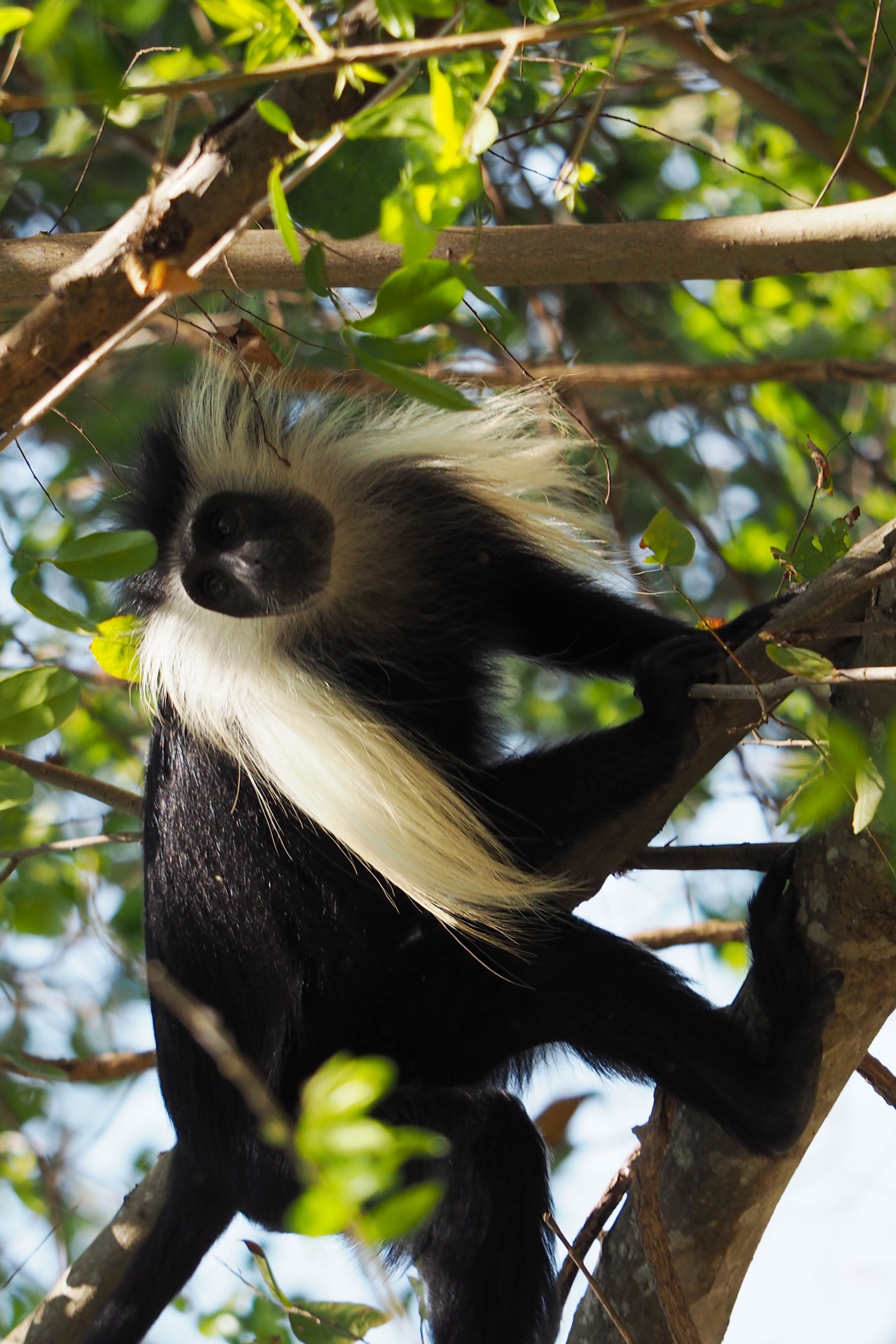|
Angolan Colobus
The Angola colobus (''Colobus angolensis''), Angolan black-and-white colobus, or Angolan colobus is a primate species of Old World monkey belonging to the genus ''Colobus''. Taxonomy There are six recognized subspecies and one undescribed subspecies from the Mahale Mountains in Tanzania: *Angola colobus, ''Colobus angolensis'' **Sclater's Angola colobus, ''C. a.'' subsp. ''angolensis'' **Powell-Cotton's Angola colobus, ''C. a.'' subsp. ''cottoni'' **Ruwenzori colobus ''C. a.'' subsp. ''ruwenzorii'' **Cordier's Angola colobus, ''C. a.'' subsp. ''cordieri'' **Prigogine's Angola colobus, ''C. a.'' subsp. ''prigoginei'' **Peters Angola colobus or Tanzanian black-and-white colobus, ''C. a.'' subsp. ''palliatus'' Physical characteristics Like all black-and-white colobi, the Angola colobus has black fur and a black face, surrounded by long, white locks of hair. It also has a mantle of white hair on the shoulders. The long, thin tail can be either black or white, but the tip is ... [...More Info...] [...Related Items...] OR: [Wikipedia] [Google] [Baidu] |
Ruwenzori Colobus
The Ruwenzori colobus (''Colobus angolensis ruwenzorii''), also known as Ruwenzori black-and-white colobus, is a subspecies of the Angola colobus. This primate is distributed from the Afromontane forests of the Ruwenzori Mountains across the mountains in Burundi and Rwanda to the northern shore of Lake Tanganyika. Taxonomy In 1901, Oldfield Thomas described two skins of Ruwenzori colobus zoological specimens that were collected at the northwestern slopes of the Ruwenzori Mountains in Bwamba Country of western Uganda. Thomas considered it a species using the scientific name ''Colobus ruwenzorii''. Characteristics The Ruwenzori colobus is black with hair on the shoulders between long. Its tail is also black and greyish-white at the end. It has white bushy tufts on the cheeks. The white hair on the forehead forms a crest. Distribution and habitat The Ruwenzori colobus occurs at Lake Nabugabo and Rwenzori Mountains National Park in Uganda. Troops of 300 to 400 individuals inhabit ... [...More Info...] [...Related Items...] OR: [Wikipedia] [Google] [Baidu] |
East Africa
East Africa, Eastern Africa, or East of Africa, is the eastern subregion of the African continent. In the United Nations Statistics Division scheme of geographic regions, 10-11-(16*) territories make up Eastern Africa: Due to the historical Omani Empire and colonial territories of the British East Africa Protectorate and German East Africa, the term ''East Africa'' is often (especially in the English language) used to specifically refer to the area now comprising the three countries of Kenya, Tanzania, and Uganda. However, this has never been the convention in many other languages, where the term generally had a wider, strictly geographic context and therefore typically included Djibouti, Eritrea, Ethiopia, and Somalia.Somaliland is not included in the United Nations geoscheme, as it is internationally recognized as a part of Somalia. *Tanzania, Kenya, Uganda, Rwanda, Burundi, Democratic Republic of Congo and South Sudan are members of the East African Community. The firs ... [...More Info...] [...Related Items...] OR: [Wikipedia] [Google] [Baidu] |
Mammals Of Rwanda
Mammals () are a group of vertebrate animals constituting the class Mammalia (), characterized by the presence of mammary glands which in females produce milk for feeding (nursing) their young, a neocortex (a region of the brain), fur or hair, and three middle ear bones. These characteristics distinguish them from reptiles (including birds) from which they diverged in the Carboniferous, over 300 million years ago. Around 6,400 extant species of mammals have been described divided into 29 orders. The largest orders, in terms of number of species, are the rodents, bats, and Eulipotyphla (hedgehogs, moles, shrews, and others). The next three are the Primates (including humans, apes, monkeys, and others), the Artiodactyla (cetaceans and even-toed ungulates), and the Carnivora (cats, dogs, seals, and others). In terms of cladistics, which reflects evolutionary history, mammals are the only living members of the Synapsida (synapsids); this clade, together with Sauropsida ... [...More Info...] [...Related Items...] OR: [Wikipedia] [Google] [Baidu] |

